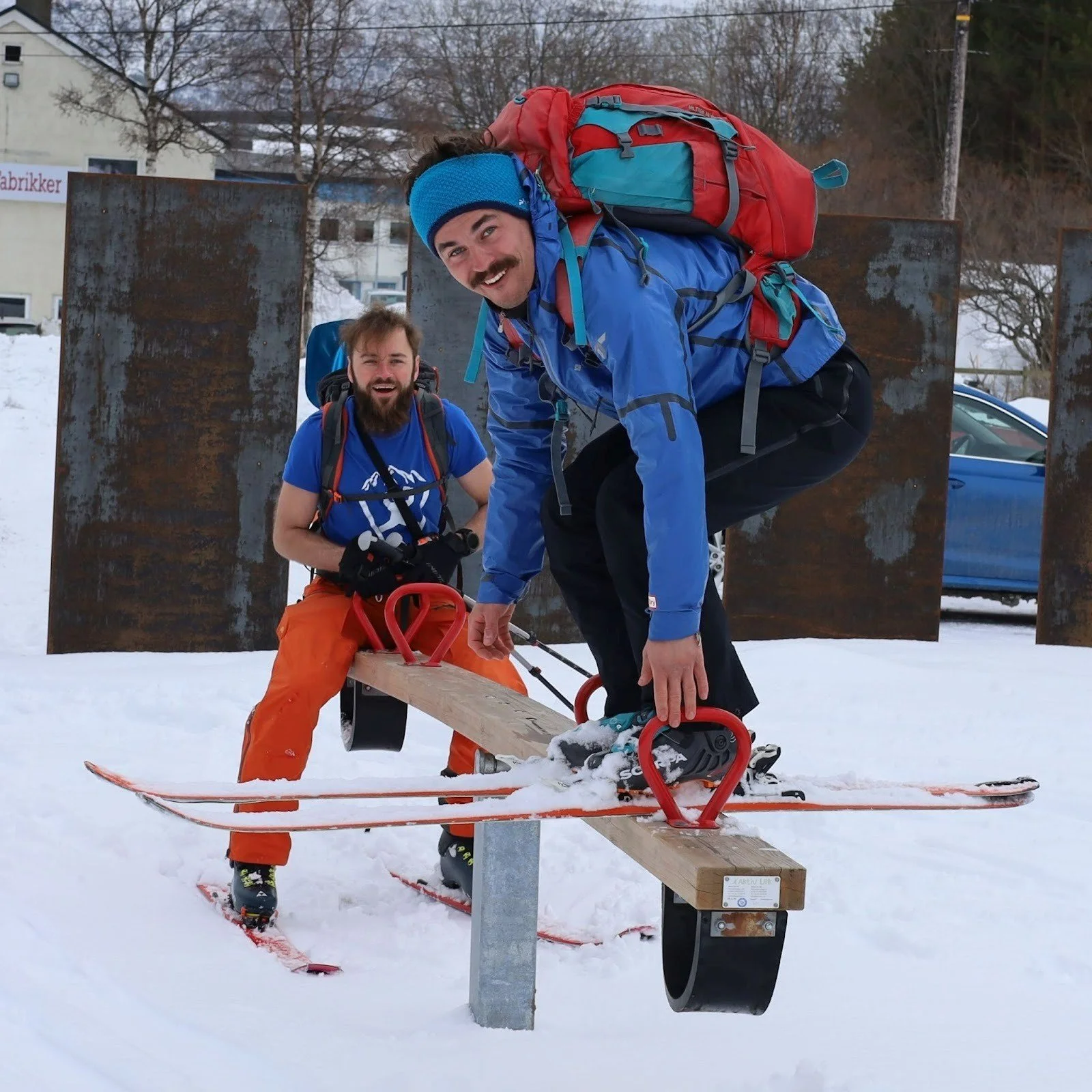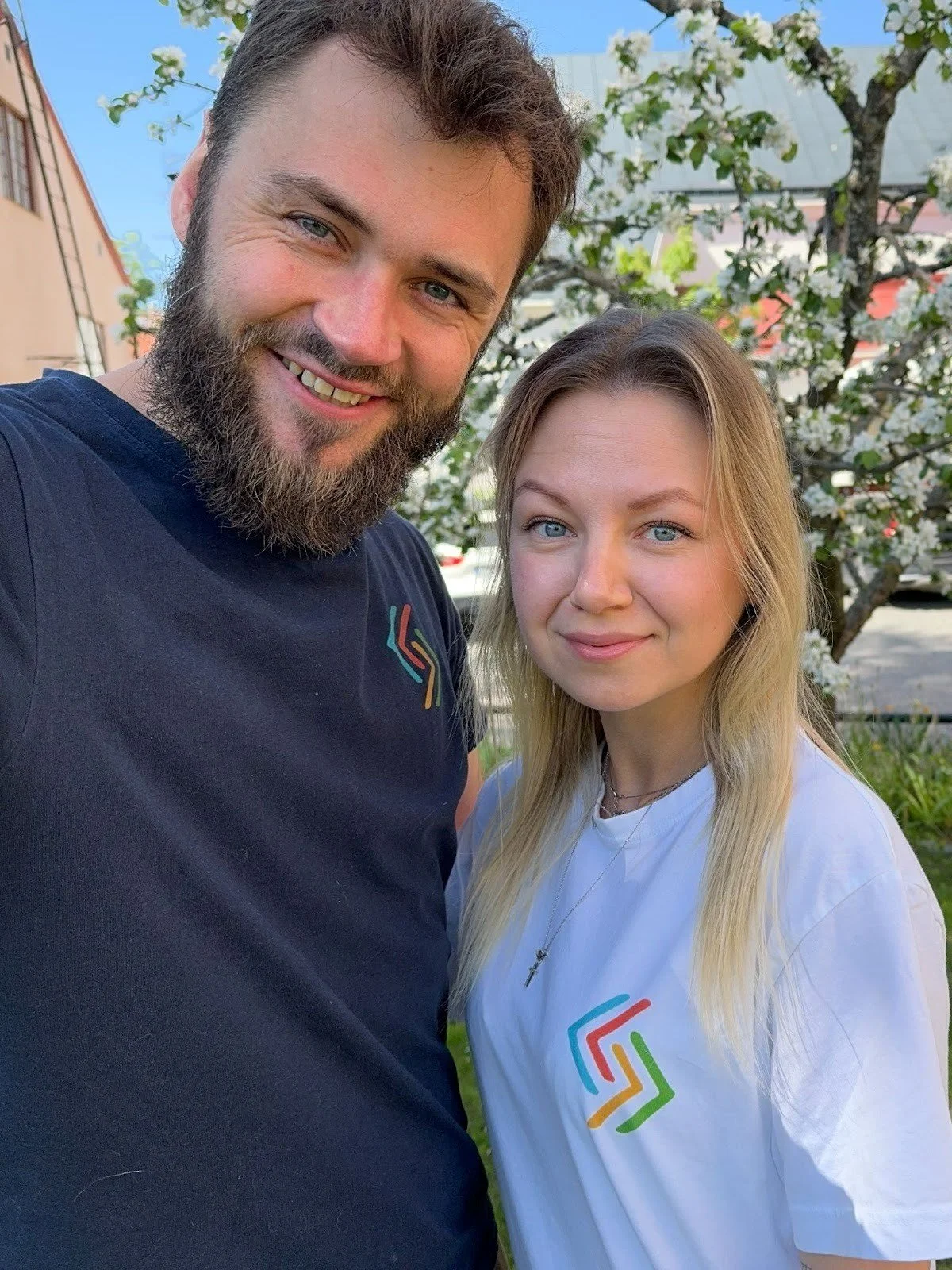Interview with Illuminum AB: Making Biodiversity Simple, Accessible, and Engaging
Biodiversity is overwhelmingly complex, but Illuminum AB is working to change that. Founded in Sweden by sustainability expert, David Jirout, the company set out to make biodiversity data easier to access, understand, and use. Their platform, gaia.eco, brings together billions of open biodiversity observations and turns them into a simple, visual, and multilingual experience, one that removes the need for specialist knowledge and invites anyone to explore the diversity of life around them. In this interview, the Illuminum AB team shares how they are lowering barriers to biodiversity analytics and making it possible for anyone, anywhere, to engage with ecological data in a meaningful way.
Read on to discover how Illuminum AB is using open data and AI to make biodiversity knowledge more inclusive, and how their work could inspire your next nature tech collaboration.
That’s how Illuminum AB started in Uppsala, a bunch of talent trying to crack how to build gaia.eco, the tech and business around it. (Image Credits: Illuminum AB)
About Illuminum AB
Q. Please describe the challenge Illuminum AB is addressing and explain why it is important to tackle this now.
Biodiversity is overwhelmingly complex. Illuminum brings ease of access , ease of use and takes away the need to know biology, ecology or what biodiversity is. With gaia.eco, biodiversity becomes simple and fun.
Q. Please share the story of how Illuminum AB was founded and what inspired the creation of gaia.eco, your biodiversity data platform.
If relative peace and freedom are to last, we believe that any person must be able to predict detrimental ecological changes in their habitats. Like the weather makes us pick clothes, we believe long-term ecological predictions must be made available to anyone to change their daily behaviour and accelerate conservation.
David was a Sustainability Chief for a gigantic Nordic consultancy in urban development at the time. David saw consultants working for constrained budgets and exclusive trust of public tenders, and they were systemically losing the battle for design of a sustainable future.
Hence, Illuminum was founded by David Jirout in 2022 to build gaia.eco as the remedy to that problem. Today, anyone can collect biodiversity data. Tomorrow, gaia.eco will bring KPIs, analytics and reporting, and any citizen will be able to voice concerns and create better reports than the best ecologist could when gaia.eco’s comes with superhuman intelligence and global data.
David Jirout (Founder) and David Schlindenbuch (Lead Developer) built the whole back-end of gaia.eco together (Image Credits: Illuminum AB)
Q. What is Illuminum AB’s core mission, and what distinguishes your approach in the field of biodiversity analytics and nature tech?
We are member of BiodiversityStartups.com, Nature Tech Collective, .eco community, and many Nordic networks. It’s clear, Illuminum’s USP is sharp focus on data-scientific validation of open data for chosen B2B applications: blue-green urban design, conservation and risk management.
David Jirout and Anna Bilokonbuilt the front-end of gaia.eco together (Image Credits: Illuminum AB)
Approach and Impact
Q. How would you describe gaia.eco to someone new to biodiversity data analytics? What capabilities does it offer, and who benefits from using it?
Gaia is a search engine with Google Map like experience.
Gaia is an aggregator of multiple modalities of biodiversity data. You will find:
3 billion geotemporal observations of eucaryotic species,
20 million biotic relationships as tables,
Links to Wiki and academic papers,
And multimedia to make the data fun.
Gaia is multilingual and supports your search queries in more than 50 languages.
Gaia makes do with simple descriptions of species with size, shape, color and texture and whether they are endemic or invasive. If you know scientific names or colloquial names of species, it helps, but it’s not necessary.
Hence, we decrease complexity and the threshold to onboard up 5 billion people to work and study biodiversity.
We aim to capture the attention of professionals and researchers to solve their problems in giaa.eco. However, we offer children and pensionaires to travel the world of plants and animals on a map. Students, teachers and nerds will bookmark gaia.eco.
Q. Your platform draws solely on publicly available data sources. Can you explain how you gather, verify, and integrate this data to make it useful for end users?
gaia.eco fetches data from open databases. Gaia then unites, cleans and transforms the data into an experience worth having.
Biotic relationships are built solely on claims from academic peer-reviewed sources. Hence, this type of public data has a relatively high reliability.
Yet, the observations suffer from a lot of bias. We’re building algorithms that clean erroneous observations and give raw data with a trust score. Hence, we aim to capture B2B markets and researchers who’ll pay for peace of mind knowing they work with corrected and reviewed datasets.
Q. AI and automation are key parts of your platform. How do these technologies improve accessibility and usability for biodiversity analytics?
AI has helped us to lower the threshold so we could turn a user of any age into a biodiversity analyst and ambassador.
Real world use and vision
Q. Could you share one or more examples of how gaia.eco has been used in practice, and what milestones or impacts you are proud of so far?
We see foresters spying on vermin that could decimate their forests. It is an interesting behaviour given the investments into nature that have come in the last few years.
We see beekeepers spying on invasives like the Asian hornet. They mobilise pollinator conservation efforts, and avoid placing hives in areas dangerous for bees.
We see urban planners look for protected species which could block an urban development project.
We see conservationists search for biotic relationships to know what plants and fish to prioritize in an area, so adequate funding and measures can be taken.
Oxford marine biology department bets on our approach of AI driven design of biotic relationship networks to provide ecosystem services for near-extinct corals in the Indian Ocean. Thus, we aim to counterfeit the environmental pressure of climate change with a nature-based solution.
We see consumers search for neighbours’ mushrooms and curious minds of all ages to discover plants and animals of distant lands they cannot fly to.
Q. Looking ahead, what is your vision for gaia.eco’s development, particularly regarding predictive analytics and tools addressing invasive species and ecological risk?
Biodiversity is overwhelmingly complex. Hence, we’ve successfully integrated gaia.eco with Claude, a powerful AI engine to simplify the workflow.
The user collects raw data from public sources with gaia.eco - such as all of ‘whales’ and ‘birds’ in the North Atlantic.
Then data points get cleansed and enhanced
The AI engine will help reasoning, analytics and reporting around collected data. Imagine the user asks simple questions:
“Do you see a dolphin in my search results outside of its natural spread zone?”
“Do you see an invasive species in my search results?”
“Do you see an overpresentation of a species compared to nominal values during the last 10 years?”
“What kelp species should we plant off the coast of Ireland to help fisheries so Pilot whale population grows by 30% in 7 years?”
“How many species do we need to introduce here to receive the BREEAM/LEED Outstanding/Platinum award for our build?”
“Extrapolate the invasion trajectory of [THIS INVASIVE SPECIES] and determine a date when it will reach the coast of Newfoundland.”
As you can see, AI and ease of access will be a powerful agent for conservation and urban development efforts.
Community and Collaboration
Q. How does Illuminum AB fit within the broader nature tech community? What types of users, partners, or collaborators do you seek to connect with?
We are a SaaS developer of a data portal. Our SaaS service serves all.
Yet, we can help NTC members on a consulting basis to make sense of the complexity in the context of urban planning, conservation, and risk management.
We seek consultants who aim to broaden their business with bigger and better datasets to boost the quality of their service. We gather partners in landscape architecture, ecology and conservation, ESG analysts for corporate compliance, GIS specialists and data engineers.
Q. What kinds of partnerships or expertise are most valuable to support your current goals and growth?
Partnership with corporates in nature finance, insurance or urban development.
Q. What contributions do you hope to make to the Nature Tech Collective community, and what support would be most helpful to you?
Avoid the traps with acquiring and interpreting biodiversity data.
Ambition, Support and Personal Perspectives
Q. What are Illuminum AB’s current priorities and longer-term ambitions for advancing biodiversity analytics?
We aim to:
Boost Green Area Index through partnerships with consultants in urban development.
Make cities more livable and migratable for insects, amphibians and birds.
Avoid poor zone planning for wind parks.
Strengthen the viability of migratory corridors for 1 bird, 1 whale and 1 large mammal species by 2030.
“We don’t fly at Illuminum. Trains, busses and boats only.” ~ Davis Jirout; On the boat to the Baltic Impact Accelerator in Tallinn with Fredrik Johansson (Designer), Martin Dospel (Back-end), Žan Križnar (Architect), David Jirout (Founder); (Image Credits: Illuminum AB)
Q. What resources such as books, podcasts, or thought leaders inspire your team in your work with nature tech?
Johan Rockström et. al Planetary Boundaries: My own moral compass.
Q. What motivates your team daily to develop tools that empower people to engage with biodiversity data?
⅓ extinction event we are heading to. I act on my self-preservation instinct.
Q. On a lighter note, could you share your favorite species or a nature story that inspires you?
Monarch butterfly: It takes 5-8 generations for the entire population to migrate from Canada to Mexico and back. The best simple stories from nature can be found our gaia.eco’s Bluesky.
Illuminum’s approach is built on a clear idea: that everyone should be able to make sense of biodiversity data, not just scientists or specialists. By uniting open databases, cleaning and validating observations, and integrating AI to support reasoning and reporting, they are creating a platform that connects people directly with the data shaping our planet’s ecosystems. From helping foresters and beekeepers track changes in local species to supporting urban planners and conservationists, Illuminum AB is showing that understanding biodiversity can be both simple and empowering, and that access to ecological knowledge should be a universal right.
Explore their work at gaia.eco and connect with Illuminum AB on their website or socials to exchange ideas, explore partnerships, or share feedback on how biodiversity data can drive meaningful change.





